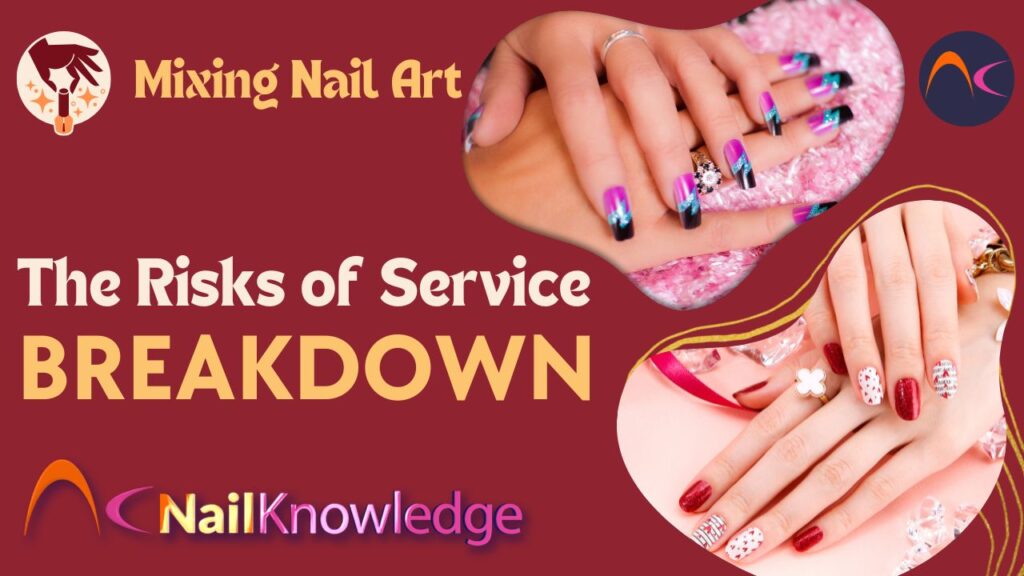As nail artists, our creativity knows no bounds. We are always striving to offer our clients unique and stunning nail art designs and pushing our skills to the next level.
However, in pursuit of the perfect design, it’s essential to understand the potential risks associated with mixing nail art products from different brands. While it may seem tempting to combine different products, finishes, and textures, doing so without caution can lead to adverse consequences.
In this blog, we’ll have a look into the dangers of possible service breakdown when doing nail art to help you ensure the safety and longevity of your clients’ manicures.
Risks of Incompatibility: Mixing Nail Art Formulas from Different Brands
One brand offers a product your regular brand doesn’t have – so why not mix them??
One of the major dangers of mixing nail art products from different brands is the potential incompatibility of their formulas.
Each brand formulates its products differently, using different ingredients and slightly different chemical compositions. Mixing them can trigger chemical reactions between the ingredients, causing changes in colour, texture, and consistency, leading to unpredictable outcomes for the manicure.
UV/LED Lamp Compatibility
Different gel products from different brands will require specific exposure to UV waves, and these will vary in intensity, time, and length, to guarantee proper curing. Mixing brands can therefore result in inadequate cure, leading to not only service breakdown, but also increasing massively the risk of allergic reactions.
Changing Chemical Composition
Adding pigments, powder and foils to acrylic or gel products could alter their ability to polymerise properly, causing issues in the long run as that will be compromising proper cure. It’s best not to play chemist and stick to being a nail professional. You can premix glitter or pigment into a clear UV gel polish or acrylic powder, but make sure there is no more than 30% which is the usual recommendation for achieving a proper cure of the coating.
Only use cosmetic grade glitters and pigments, and NOT craft versions. These can react with the product or the solvents and create an irritation or an allergic reaction.
Possible Adverse Reactions During Removal
Remember those incompatible ingredients we talked about before? They lasted well after being applied to the nail, but during the soak off process adding acetone, it can become a different story!
Once diluted in a powerful solvent, we have no control over the chemical reaction that could occur. Stick to cosmetic grade glitters, pigments, foils etc. that were meant to be used together. Safe & proper removal of product is as important as the application, mistakes or damage caused here will influence the durability of the next new set, you may not notice it now, but in a week or 2 there could be real problems.
Conclusion
As tempting as it might be to purchase new products from different brands to test out designs, the dangers of mixing nail art products from different brands cannot be ignored. The risks of incompatibility, chemical reactions, inconsistent curing times, service breakdown, and challenges in removal can lead to subpar manicures, disappointed clients, or even a potential hazard.
To ensure the safety and longevity of your services, it’s best to leave all the guesswork aside, and stick to manufacture’s guidance, without trying to play chemist. Stick to one reputable brand for your nail art creations, only add in cosmetic grade nail art products in the recommended amounts and cure according to the manufacturers recommendation.
By prioritising quality and safety, you can deliver exceptional nail artistry that keeps your clients coming back for more.


